German Orders of Battle before the summer offensive in Russia (Operation Blue) of June 24, 1942.
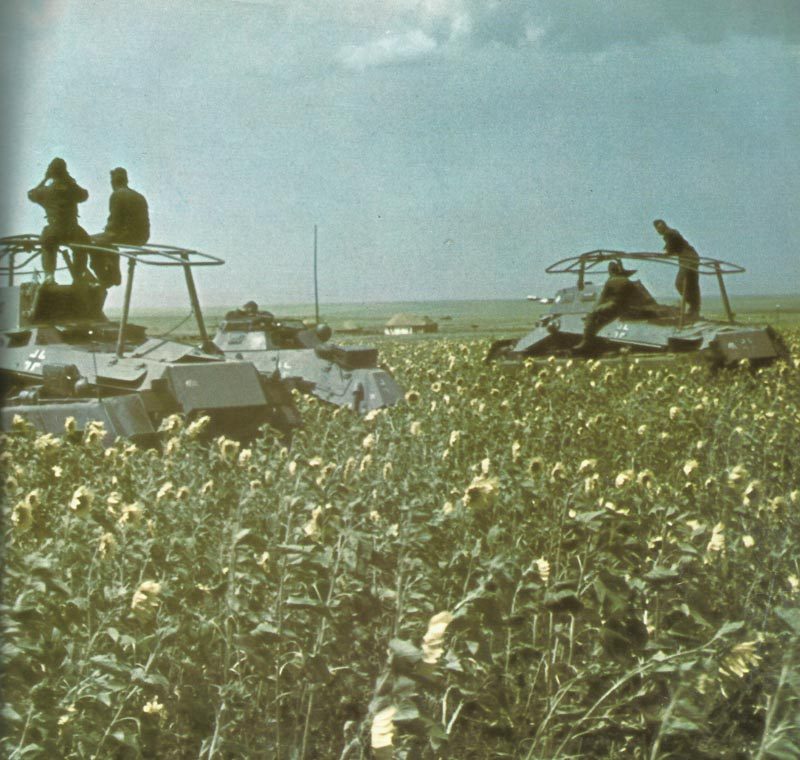

The German Orders of Battle and distribution of the divisions from the Wehrmacht and subordinated units of allies shortly before the summer offensive in Russia (Operation Blue, starting June 28, 1942) and the tank inventory from the beginning of the year with known numbers of tank models in the summer of 1942.
Operation Blue
Table of Contents
Schematic layout of the German Wehrmacht from June 24th, 1942
Army Group South:
Corps | Divisions |
|
|---|---|---|
located in southern Russia | (Reserves: 323 Inf, 340 Inf, 371 Inf, Hungarian 10 light, Hungarian 12 light, Hungarian 13 light, Hungarian tank-div, Italian Inf div Ravenna, Sforzesca, Cosseria) |
|
11th Army | LIV Corps | 132 Inf (parts), 46 Inf, 22 Inf, 73 Inf (parts), 50 Inf, 46 Inf (parts), 4 Romanian Mountain div |
Romanian Mountain-Corps | 18 Romanian Inf, 1 Romanian Mountain div |
|
XXX Corps | 72 Inf, 170 Inf, 28 light, 213 Security (parts), 444 Security (bulk), 125 Inf div (parts) |
|
XXXXII Corps | 8 Romanian Cav, 10 Romanian Inf, 19 Romanian Inf, Romanian fast Reg, 22 Panzer (parts), 132 Inf div (bulk) |
|
Romanian Cavalry Corps | 6 Romanian Cav, 5 Romanian Cav, Security-Reg 4, 298 Inf div |
|
XIV mot Corps | ||
17th Army | XXXXIX Mountain-Corps | 4 Mountain, 198 Inf div |
Italian fast Corps | Italian Celere, Torino, Pasubio div, 6 Bersagleri Reg |
|
LII Corps | 111 Inf div |
|
IV Corps | 94 Inf, 9 Inf, 76 Inf, 295 Inf, 370 Inf div |
|
1st Panzer Army | XXXXIV Corps | 257 Inf, 101 light, 97 light, 68 Inf div, Walloon 373 ´battalion |
XI Corps | 1 Mountain, 1 Romanian Inf, 454 Security div |
|
Romanian VI Corps | 4 Romanian Inf, 20 Romanian Inf, 2 Romanian Inf |
|
III mot Corps | 14 Panzer, 16 Panzer, 22 Panzer (bulk), 60 mot Inf div |
|
LI Corps | 384 Inf, 62 Inf, 44 Inf, 71 Inf, 297 Inf div |
|
6th Army (Reserves: 100 light div, Croat 369 Inf Reg) | XVII Corps | 294 Inf, 79 Inf, 113 Inf div |
VIII Corps | 305 Inf, 389 Inf, 376 Inf div |
|
XXXX mot Corps | 336 Inf, 3 Panzer, 23 Panzer, 29 mot Inf div |
|
XXIX Corps | 75 Inf, 168 Inf, 57 Inf div |
|
2nd Army (Reserves: 88 Inf, 383 Inf div) | LV Corps | 95 Inf, 45 Inf, 1 mot SS-Inf Brig, 299 Inf div |
Hungarian 2nd Army | Hungarian III Corps | 7 Hungarian light, 9 Hungarian light div, 16 mot Inf div |
VII Corps | 6 Hungarian light Inf, 387 Inf div |
|
4th Panzer-Army | XXIV mot Corps | 377 Inf, 9 Panzer, 3 mot div |
XIII Corps | 82 Inf, 385 Inf (bulk), 11 Panzer div |
|
XXXXVIII mot Corps | mot Inf div Grossdeutschland, 24 Panzer div |
|
Commander of the Army Group South | 444 Security (parts), 213 Security (parts), Hungarian 105 Security div |
Army Group Center:
Army | Corps | Divisions |
|---|---|---|
located in Byelorussia | (Reserves: Hungarian 108. Security div) |
|
2nd Panzer Army (Reserves: 707 Inf (bulk), Hungarian 102 light Inf div) | XXXV Corps | 262 Inf, 221 Security, 293 Inf, 4 Panzer div |
LIII Corps | 25 mot Inf, 112 Inf, 296 Inf, 56 Inf, 134 Inf div |
|
XXXXVII mot Corps | 211 Inf, 208 Inf, 216 Inf (parts), 18 Panzer, 17 Panzer, 339 Inf (bulk), 707 Inf div (parts) |
|
4th Army (Reserves: parts 34 Inf div | LVI mot Corps | 331 Inf, Luftwaffen battle-groups, 10 mot Inf, 267 Inf, 19 Panzer, 403 Security (parts), 52 Inf, 131 Inf, 216 Inf div (parts) |
XXXXIII Corps | 31 Inf, 201 Security (parts), 34 Inf, 137 Inf div |
|
XII Corps | 263 Inf, 260 Inf, 98 Inf, 268 Inf div |
|
3rd Panzer-Army (Reserves: 20 Panzer div) | XX Corps | 255 Inf, 183 Inf, 292 Inf, 258 Inf div |
IX Corps | 7 Inf, 78 Inf, 252 Inf, 35 Inf div |
|
XXXXI mot Corps | 342 Inf, 46 mot Inf, 161 Inf div |
|
9th Army | VI Corps | 6 Inf, 339 Inf (parts), 26 Inf div |
XXVII Corps | 251 Inf, 14 mot Inf, 206 Inf, 86 Inf div |
|
XXIII Corps | 253 Inf, 129 Inf, 110 Inf, 1 Panzer, 102 Inf div |
|
XXXXVI mot Corps | 87 Inf, 328 Inf (bulk), 5 Panzer div |
|
Group General Esebeck | 246 Inf, 2 Panzer, 197 Inf div |
|
LIX Corps | 330 Inf, 205 Inf, 83 Inf, 328 Inf (parts), 218 Inf div (parts) |
|
Commander of the Army Group Center | 286 Security, 201 Security (parts), 203 Security div, French Inf battaillon 638 |
Army Group North:
Army | Corps | Divisions |
|---|---|---|
in northern Russia | ||
16th Army | XXXIX mot Corps | 218 Inf (parts), 121 Inf (parts), 122 Inf (parts), 8 Panzer div, 329 Inf div (parts) |
II Corps | 218 Inf (parts), 123 Inf, 225 Inf (parts), 32 Inf, 12 Inf, 30 Inf, 281 Security (parts), 290 Inf, 3 SS-Panzer Totenkopf, SS-Freikorps Danmark |
|
X Corps | 329 Inf (bulk), 8 light, 5 light, 7 Mountain (parts), 122 Inf (bulk), SS-Police Reg Nord, 18 mot Inf, 81 Inf div (bulk), several Luftwaffen Field regiments |
|
18th Army (Reserves: parts 12 Panzer div) | XXXVIII Corps | 250 (Spanish) Inf, 58 Inf, 126 Inf, 2 mot SS inf brigade, 265 Security div (parts) |
I Corps | 254 Inf, 291 Inf, 115 Inf, 61 Inf, SS-Police div, 121 Inf div (bulk), 9 SS inf reg, 81 Inf (parts), 212 Inf (parts), 20 mot Inf, 225 Inf (parts), 1 Inf, 217 Inf div (parts) |
|
XXVIII Corps | 269 Inf, 11 Inf, 21 Inf, 93 Inf, 12 Panzer (bulk), 217 Inf (bulk), 96 Inf, 5 Mountain div (parts), 2 Paratroopers reg |
|
XXVI Corps | 223 Inf, 227 Inf, 207 Security (parts) |
|
L Corps | 5 Mountain div (parts), SS regiment Norway, 385 Inf (bulk), 285 Security (parts), 225 Inf (bulk), 212 Inf div (bulk), Inf Reg 322 |
|
Commander of the Army Group North | 207 Security (parts), 281 Security (parts), 285 Security (parts) |
subordinated to OKW (Headquarter of the Wehrmacht):
Army | Corps | Divisions |
|---|---|---|
located in Norway, Lapland and Finland | ||
20 Mountain Army | III Finnish Corps | 3 Finnish Inf, SS-Di North, provisional inf div (2 Mountain + 1 Inf Reg) |
XXXVI Mountain Corps | 169 Inf, 163 Inf (bulk) |
|
Mountain Corps Norway | 6 Mountain, 214 Inf (parts), 2 Mountain, 69 Inf div (parts) |
|
AOK_Norway (Reserves: 3 Mountain, 25 Panzer div) | LXXI Corps | 230 Inf, 270 Inf, 199 Inf div |
XXXIII Corps | 196 Inf, 702 Inf, 181 Inf div |
|
LXX Corps | 69 Inf (bulk), 280 Inf, 214 Inf (bulk), 710 Inf div |
Army Group D, Commander of the West:
Army | Corps | Divisions |
|---|---|---|
in France, Belgium and Netherlands | (Reserves: 23 Inf div) |
|
Wehrmacht Commander Netherlands | LXXXVIII Corps | 167 Inf, 719 Inf div |
15th Army (at Pas-de-Calais, Reserves: 10 Panzer div) | LXXXII Corps | 304 Inf, 306 Inf, 106 Inf, 321 Inf, 712 Inf div |
LXXXI Corps | 302 Inf, 332 Inf, 711 Inf div |
|
LXXXIII Corps | 337 Inf div |
|
7th Army (Normandy and Brittany, Reserves: 7 Para div, Panzer Brig 100, 6 Panzer div, Para Reg Hermann Goering) | LXXXIV Corps | 716 Inf, 319 Inf, 320 Inf div |
XXV Corps | 709 Inf, 335 Inf, 17 Inf, 333 Inf div |
|
1st Army (southwest France, Reserves: 7 Panzer div) | LXXX Corps | 327 Inf, 708 Inf, 715 Inf, 15 Inf div |
Commander Southeast:
Army | Corps | Divisions |
|---|---|---|
in the Balkans | ||
12th Army (Reserves: Inf Reg 440) | Commander of Fortress Crete | Fortress div Crete |
Commanding General in Serbia | 718 Inf, 714 Inf, 704 Inf, 717 Inf div |
Africa:
Army | Corps | Divisions |
|---|---|---|
Western Desert | ||
Panzer Army Afrika (Reserves: bulk 90 light div) | DAK | 15 Panzer, 21 Panzer div |
Italian mot. Corps | Italian tank div Ariete, Italian mot Inf div Trieste |
|
Italian X Corps | Italian Inf div Pavia, Brescia |
|
Italian XXI Corps | ital Inf div Trento, Sabrata, 90 light div (parts) |
Reserve Army and Commander of the army armament:
Army | Corps | Divisions |
|---|---|---|
Commander of the German units in Denmark | 416 Inf div |
|
7 Mountain div (parts) |
Overview of fully established and operational divisions of the Wehrmacht, Waffen-SS, Luftwaffe and allied units under operational control:
| Tank | mot.Inf | Inf | Mt | Sec | AF | Allied | Total | |
|---|---|---|---|---|---|---|---|---|
| Army Group South | 12 | 8 | 47 1/3 | 2 | 4 | - | 28 | 101 1/3 |
| Army Group Center | 8 | 4 | 49 | - | 4 | - | 2 | 67 |
| Army Group North | 3 1/3 | 4 | 32 | 2 | 2 1/3 | 1 1/3 | - | 45 |
| Norway, Finland | 1 | - | 13 | 3 | - | - | 1 | 18 |
| OB West | 3 1/2 | - | 23 | - | - | 1 1/3 | - | 28 |
| OB Southeast | - | - | 5 1/3 | - | - | - | - | 5 1/3 |
| Africa | 2 | 1 | - | - | - | - | 6 | 9 |
| Denmark | - | - | 1 | - | - | - | - | 1 |
| TOTAL | 27 | 17 | 170 2/3 | 7 | 10 1/3 | 2 2/3 | 37 | 274 2/3 |
Tank = armored division; mot.Inf = motorized infantry; Inf = Infantry; Mt = mountain division; Sec = security division; AF = Air Force (Luftwaffe) divisions (Air landing, Paratroopers, Luftwaffe Field); Allied = allied units
Approximate organization strength of the major types of the German Army divisions in 1942:
Germany Army Unit Organization 1942-45
Tank strength
Inventory of armored fighting vehicles on January 1, 1942:
Type | Figures |
|---|---|
723 |
|
837 |
|
Panzer II (flame-thrower) | 89 |
Panzer 35(t) | 197 |
381 |
|
1,849 |
|
513 |
|
Armoured Command Vehicles | 307 |
Assault gun StuG III | 625 |
TOTAL | 5,521 |
Known quantities of tanks along the whole Eastern Front at the beginning of the summer offensive (June) and in Africa (July):
Type | Figures |
|---|---|
Panzer III (E-J) short 5cm gun L/42 | c.500 |
Panzer III (J-L) long 5cm gun L/60 | c.600 |
Panzer IV (B-F1) short 7.5cm gun L/24 | 208 |
Panzer IV (F2-G) long 7.5cm gun L/48 | c.170 |
StuG III (B-E) short 7.5cm gun L/24 | 619 |
other Armored fighting vehicles | c. 1,884 |
Russian Front TOTAL (May) | 3,981 |
Panzer II combat ready with Africa Corps (July 6) | 4 |
Panzer III (E-J) combat ready with Africa Corps (July 6) | 33 |
Panzer IV (B-F1) combat ready with Africa Corps (July 6) | 3 |
Armoured Command Vehicles combat ready with Africa Corps (July 6) | 4 |
Armored fighting vehicles in West, reserves, under repair or in transit | 1,822 |
TOTAL armoured fighting vehicles (May) | 5,847 |
The Second German Summer Offensive in Russia
The major defeats suffered by the Soviet Union in the early stages of the German summer offensive were caused by Stalin’s misjudgment of German intentions.
While Soviet intelligence had correctly recognized that the main offensive would be in the south toward the Caucasus and would probably be followed by an attempt to cut off the rail link to Murmansk and then only operations against Moscow and Leningrad would follow the main blow, Stalin prevailed with his opposite assumption.
Unable to direct the offensive properly, Timoshenko was unable to break it off quickly enough, and the German spearheads advanced into the rear of his attack as well as into the Izium front bulge.
The result was one of the greatest German victories and one of the most terrible Russian defeats of the war: by the end of May, about 100,000 Red Army soldiers had lost their lives and over 200,000 had been taken prisoner. In addition, about 1,300 tanks and 2,000 guns of the Soviets were destroyed or captured. The Germans had thus reached their starting position for the main offensive, while the Soviets had suffered heavy losses.
At the eastern end of Crimea, the Soviet Army had a significant superiority in troops and weapons, and the terrain offered the Germans little evasion for flank attacks.
However, the incompetence of Soviet commanders Dmitriy T. Kozlov and Lev Z. Mekhlis, as well as massive air support that Hitler pushed through against the opposition of the Luftwaffe staff, evened out the situation.
Through a series of massive attacks by von Manstein’s 11th Army, the Soviet Crimean front was annihilated between May 8 and 20. A push on the southern flank broke through the front lines, and the Soviet front commander never regained full control of the situation. Most of the soldiers of the twenty-one Soviet divisions were killed or became prisoners. Just one-third of the 300,000 Soviet soldiers escaped across the Kerch Strait into the North Caucasus, only to rejoin the fighting there later.
The very risky operation in the eastern Crimea went smoothly for the German troops, but the subsequent attack on the large fortress of Sevastopol lasted not the eleven days actually planned, but thirty days. This is a particularly striking difference from the fall of Tobruk, which took place around the same time in just two days.
The entire operation thus began under an artillery barrage so fierce it was reminiscent of World War I, and included an amphibious assault across Severnaya Bay, the inlet north of the city.
In a fierce, grueling battle, the Germans and their allies cut their way through the fortifications, captured the city, and seized the peninsula that juts westward south of Sevastopol.
On July 5, Manstein was able to hold a victory parade after taking the major fortress and some 90,000 prisoners. Although only a small part of the garrison, including most of the specialists, were evacuated by air and submarines, the entire operation cost the Germans and their allies very heavy casualties-probably nearly 100,000 men – and much time.
Soviet commander Oktyabsky was among the evacuees, but his soldiers had made the Germans pay a heavy price.
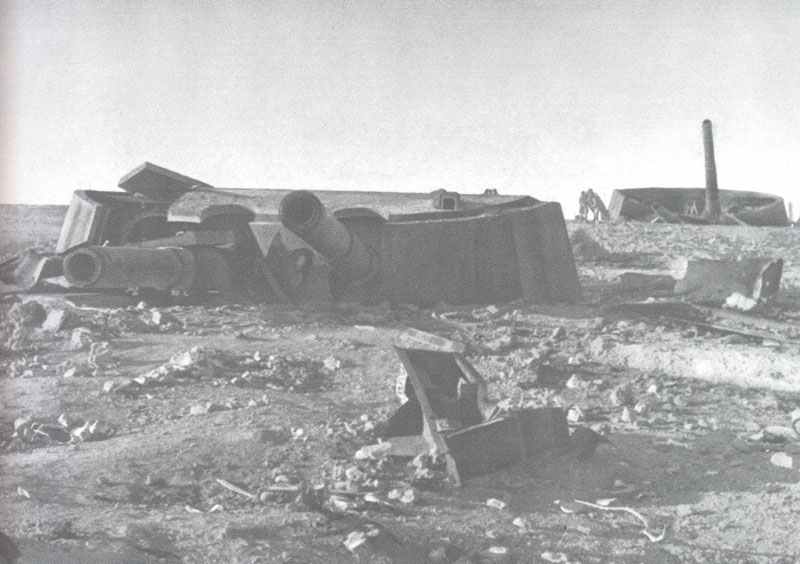
As the huge siege guns were loaded for the long journey to the front outside Leningrad and the surviving soldiers of the victorious army rested a bit before heading north as well, the great offensive in the south got rolling.
The German plan for the offensive in the south called for a series of distinct phases. First, an attack in the direction of Voronezh, then a swing south down the Don to meet the spearheads of an attack from the direction of Belgorod.
This in turn was to be followed by another attack southward down the Don. The theory was that in this way all Soviet forces west of the Don would be destroyed. The main mass of the German army would then move south into the Caucasus.
Since there were not enough troops to cover the Don front, which was about 450 miles (750 kilometers) long and would remain unsecured as the German units moved south, the allies were to provide the necessary units.
In the fall of 1942, 24 Romanian, 10 Italian, and 10 Hungarian divisions were in the east, the bulk of them in three armies on the Don, with the Italian 8th Army separating the Hungarian 2nd in the north and the Romanian 3rd in the south so that these quarreling allies would not clash much rather than fight the Russians.
At the last moment, a German officer crashed behind the Soviet front with important documents about the planned offensive, but Stalin thought these maps and papers were a fake.
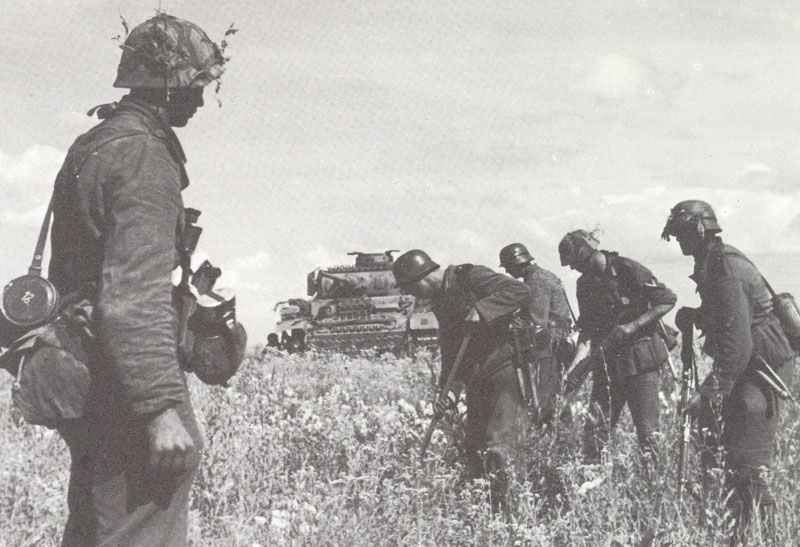
On June 28, the Germans struck toward Voronezh, broke through Soviet defenses, formed a bridgehead across the Don River, captured the city, and then moved south.
The attack farther south also pushed through quickly, joining the spearhead from the north, but the result was not what was expected at Fuehrer headquarters. The Russians had not fought as fiercely as in the months before, and had retreated. True, some Soviet units were trapped, but this was out of all proportion to the pocket battles of 1941.
The same thing happened in the next blow. The German tanks from the north advanced on Millerovo, a town between the Don and Donets rivers, which was also the target of an attack from the west, but again the converging spearheads trapped only a smaller number of Red Army troops.
And when the German units – except for the 6th Army, which was still moving east – rushed toward Rostov and the lower Don in a third massive pincer operation, they found the bulk of the Soviet forces gone and the bridges blown up.
Much more important was the changed leadership style of Hitler and Stalin. Both stills changed supreme commanders, Stalin even more frequently than Hitler, but there was one major difference. Hitler, who had become accustomed to intervening more and more directly in the details of tactical operations during the winter crisis of 1941-42, continued this behavior.
In order to control the operation more directly, he moved in mid-July from his headquarters in East Prussia to a new headquarters near Vinnytsia in Ukraine, where the officers and secretaries could still smell the only makeshift buried corpses of Jews who had been murdered after working on the construction of the headquarters.
Stalin, on the other hand, was now more willing to listen to his military experts, especially on one crucial point. Shaposhnikov had been replaced as Chief of the General Staff by General (later Marshal) Vasilyevsky for reasons of actual health on June 26, two days before the start of the German offensive.
Seemingly at his insistence, troops in the southern part of the front were ordered on or about July 6 to retreat fighting rather than remain in place and hold their positions, which had led to encirclement and annihilation in 1941.
Although there was some evidence of internal problems in the Red Army and desperate measures were resorted to in order to maintain morale, cohesion, and discipline, the fact remains that Army units either withdrew cohesively or at least subsequently reassembled them.
By the end of July, the Germans had conquered a large and, in some cases, very rich territory, but the capture of only 100,000 to 200,000 prisoners in three pocket battles showed that the great victory Hitler proclaimed to his officers in Directive 45 of July 23, 1942, was in part illusory.
The Soviet Union had been dealt a blow, but the claim that the objectives of the summer offensive had been ‘largely achieved’ was to prove less and less true in the weeks that followed.
However, this euphoric view of developments was believed with full conviction at German headquarters – at least by Hitler himself. Based on this conviction, new operational orders were issued.
These stipulated that the planned operations were now to be carried out simultaneously rather than sequentially. All divisions of Manstein’s 11th Army, as well as the heavy siege artillery that had just been released for a new deployment after the capture of Sevastopol, were sent north to take Leningrad instead of being sent east to the North Caucasus as had once been envisioned.
Even more dramatically, the bulk of the forces of Army Groups A and B, originally intended to advance eastward to prepare for and cover a later offensive southward into the Caucasus, were now immediately sent southward, while only the German 6th Army marched eastward toward Stalingrad.
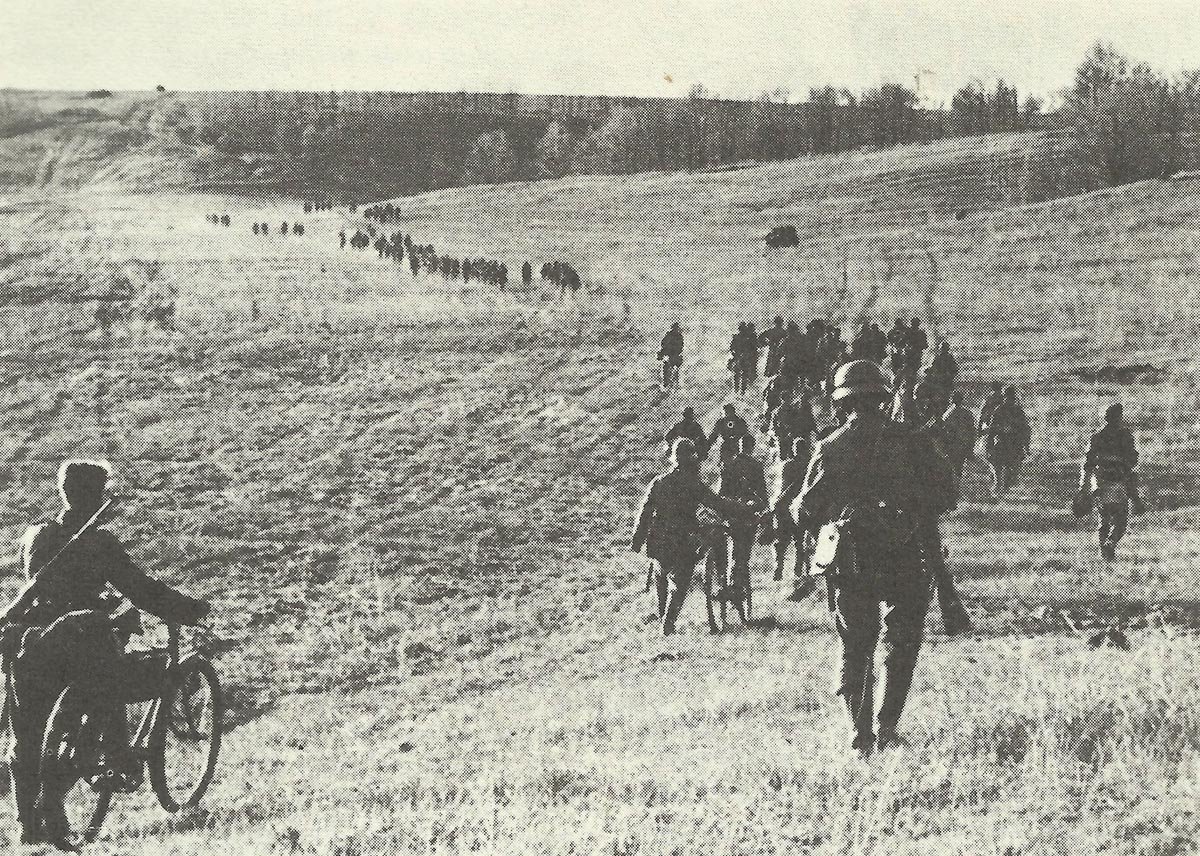
Of the five German armies available in the south, roughly speaking, one was sent to the Leningrad front, one to Stalingrad, and three (4th Panzer, 1st Panzer, and 17th) to objectives in the Caucasus area.
While the latter advanced in that direction and covered the greatest distances, the 6th Army was not only deprived of most of its tank support and left to its own devices, but also for a time without the minimum of supplies to move at all.
Hitler’s personal role in this eccentric conduct of operations, probably rooted in his simultaneous insistence on measures to cut off the Soviet Union from support from its Western allies, were the causes of this strange German troop deployment. Added to this were Hitler’s extraordinary reactions when things then quite obviously began to go wrong.
At first, in fact, it looked as if everything would quickly turn out in favor of the Germans and disastrously for the Soviet Union and its allies. By the end of July, the three armies advancing south and southeast had crossed the 150-miles(250-kilometer)-long lower Don River and at two points had severed the rail line connecting the North Caucasus with Stalingrad.
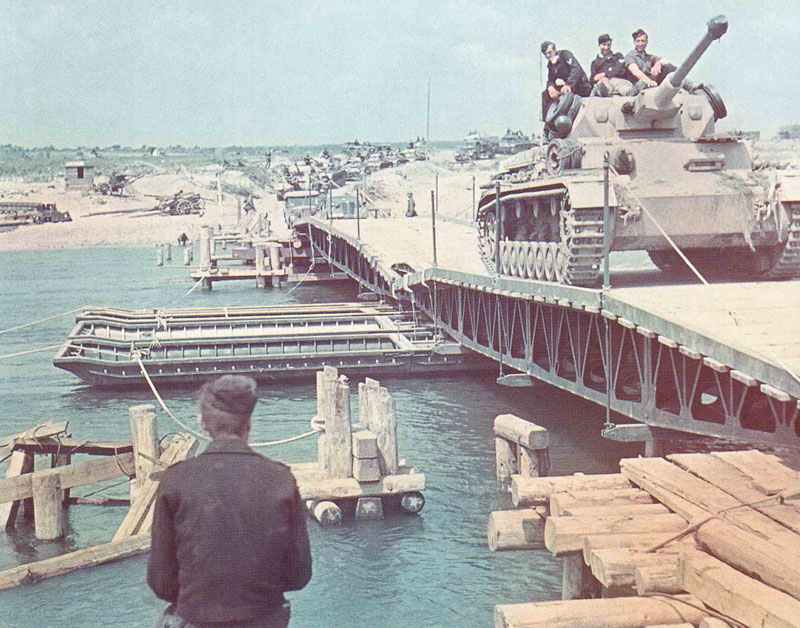
In the first two weeks of August, German troops, moving through some of the richest agricultural areas of the Soviet Union, captured the city of Krasnodar and occupied the first of the oil fields at Maikop, which was one of the main targets of the entire 1942 operation. The facilities had been destroyed by the Russians, but the Germans hoped to repair them while their troops advanced to the other oil fields. These were at Grozny, 200 miles (330 kilometers) to the east, and at Baku, another 300 miles (500 kilometers) away. But they were never to reach either of these targets.
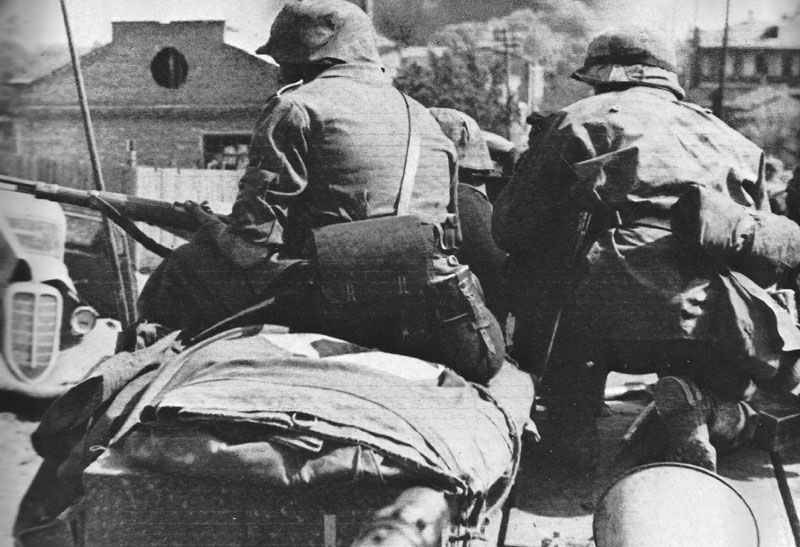
As the Germans advanced across the plains of the North Caucasus and into the foothills, they were able to make dramatic advances because the Red Army was still retreating; but in the process, the balance began to shift.
On the German side, not only were they experiencing supply difficulties as units covered great distances from their bases in Ukraine, but the spearheads were weakening as they were fragmented by great distances.
By the end of August, German troops attempting to advance against the Soviet naval base at Novorossysk were 300 miles (500 kilometers) from those that had taken Mozdok on the road to Grozny. Between these two spearheads, others attempted to cross the Caucasus passes to capture Tuapse and Sukhumi on the Black Sea.
At each of these points, ever smaller and more exhausted German assault units met fierce resistance from a Red Army called by its leadership to desperate efforts to halt the German advance southward.
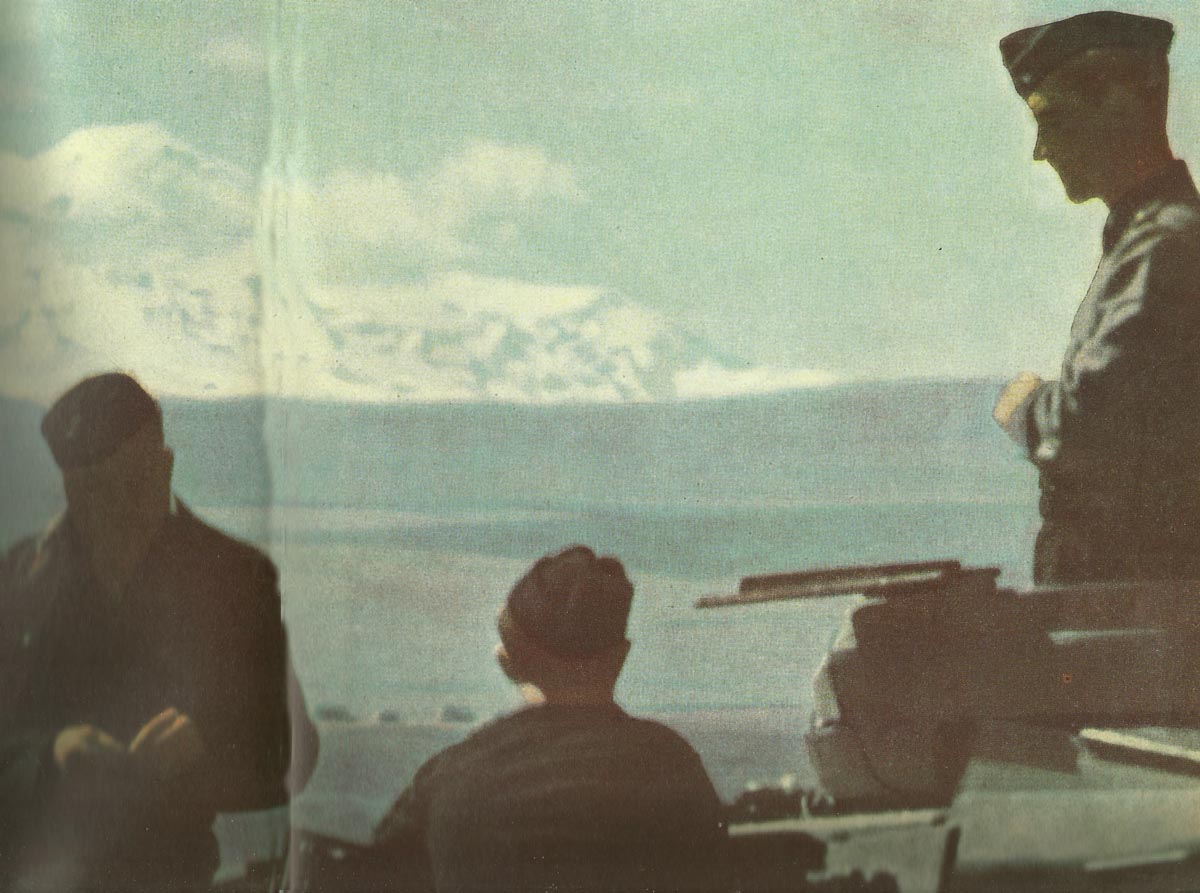
In contrast, the transfer of units to the two main Soviet commands, the Black Sea Group to the west and the Transcaucasus Front to the east, which were attempting to halt the advance of German forces to the south, was difficult and protracted.
Although some reinforcements did get there, partly by rail and partly by sea, a significant portion came from the south, i.e., from the border with Turkey and from Iran, where Western lend-lease tanks and aircraft also arrived.
For some time, the Turkish government had been watching developments in the north with a mixture of concern and greed. There was obviously the possibility that, if the Soviet Union collapsed under German pressure, some of the areas in the Russian Caucasus with Turkish populations might fall to Turkey.
However, there was also the possibility that an expanding and aggressive Germany might then stand on Turkey’s northern as well as its European border and claim the right to advance through the country into Syria and Iraq, both of which were now under British control.
In June 1942, when Tobruk surrendered after a two-day siege and while the Germans were making their way into Sevastopol, it looked for a moment as if the Germans might also emerge on Turkey’s southern border.
This situation changed, however, in July and early August, when the British held their positions at El Alamein. Regardless of what else Turkey might do, it was certainly not about to join the Axis forces. Under these circumstances, the Soviet High Command ordered seven divisions and four brigades to withdraw northward from the Turkish border to oppose the Germans.
References and literature
Der Grosse Atlas zum II. Weltkrieg (Peter Young)
Krieg der Panzer (Piekalkiewicz)
Kriegstagebuch des Oberkommandos der Wehrmacht, Band 1-8 (Percy E. Schramm)
Kraftfahrzeuge und Panzer der Reichswehr, Wehrmacht und Bundeswehr (Werner Oswald)
Encyclopedia of German Tanks of World War Two (P.Chamberlain, H.L.Doyle)
A World at Arms – A Global History of World War II (Gerhard L. Weinberg)



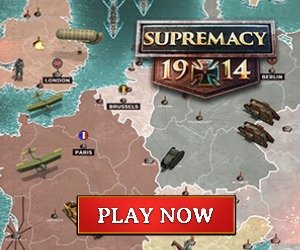
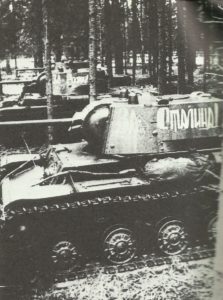
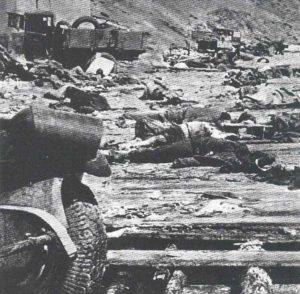

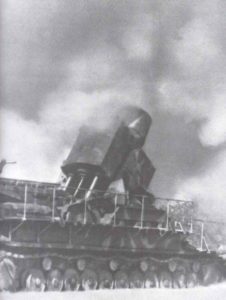
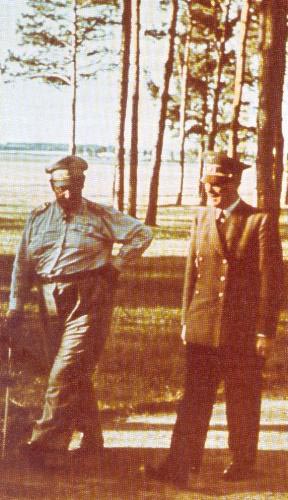
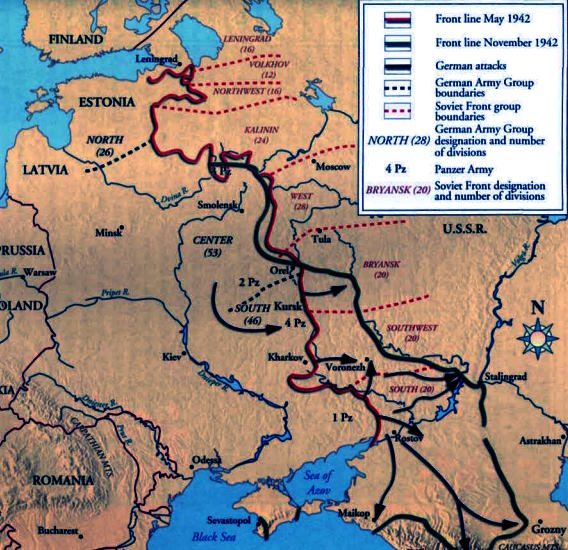




Totenkopf (or Death’s head ) was formed in Oct 1939 mainly from what was then the ‘Totenkopfverbande’ -concentration camp guards, Selbstschutz, and men from the SS Heimwehr Danzig.
Initially formed from concentration camp guards of the 1st (Oberbayern), 2nd (Brandenburg), and 3rd (Thüringen) Standarten (regiments) of the SS-Totenkopfverbände.
The division had officers from the SS-Verfügungstruppe (SS-VT).
The unit’s insignia dates back to Frederick the Great’s (1712-86) grenadiers – troops of exceptional quality, vigour, and bravery.
Correct, more here: SS-Totenkopf Division !
To be accurate, LAH was ordered to France. 9th and 11th Panzer and GD went to Army Group Center, while 11th Army was sent to AGN. Don’t know about the three infantry divisions though.
This is the official OKW Order of Battle, created at ‘Führerhauptquartier’ at this date.
Let’s not forget Hitler ordered 11th army, plus 1st SS, Grossdeutchland, and another 2 panzer and 3 infantry divisions to either HGN, or HGC.
This constituted 25% of Army Group South’s mechanised and motorised strength.
Also Luftflotte 4 could only cover one army group. Hitler should have either ramped up production after the failure at Moscow, introducing more standardisation, or split Luftflotte 4 into two separate organisations.
Ironically, Army group A became stranded when Hitler ordered Luftflotte 4 North to Stalingrad, and prioritised supply to Army group B.
He ought to have remained calm and patient and allowed the original Fall Blau plan to run its course: Voronezh to Astrakhan with 1st and 4th Pz armies in the Vanguard, 11th Army lay’s siege to Stalingrad, 17th army guards the Northern flank of Stalingrad, 8th Italian Army is held in reserve for the drive to the Caucasus, 6th army is reduced to a regular size army and guards Astrakhan.
1st and 4th Pz are pulled back, rested and refitted whilst in mobile reserve during the inevitable soviet winter offensive, II SS Pz Corps is rushed into being by early ’43.
Given that the line from Voronezh – Astrakhan holds, OKH now must form an Army group ‘Kaukasus’ to drive south in April ’43 to take Maykop, Grozny and Baku, with the soviets having been deprived of any of the resources south of the Volga-Don land bridge, which means they have little fuel, a food crisis, but still massive manpower reserves, the Wehrmacht can expect a hell of a lot of rifle divisions to be thrown at them along the Volga, and from the Caucasus.
the II SS Panzer Corps was made up of 1st LSSAH, 2nd Das Reich, & 3rd Totenkopf, constituted in early ’43.
1,2,3 were no panzerdivisions nor Panzergrenadierdivisions. The were somewhat of a mot. Inf. Division in June 1942.
Which is 1,2,3 ? The SS divisions ? In this case: In mid-1942 the Leibstandarte, Reich, Totenkopf and Wiking received Panzer IV tanks, so that they could be classified as panzer grenadier divisions.
Nice job; usefull. Gives a sense of how dysfunctional German organization was becoming after 1941-42 Soviet Winter Offensive. Was SS Totenkopf a pz or pzg in June, 1942?
3 SS Totenkopf reorganized from Oct 42 – Jan 43 to a Panzer Division.
We want order of battle 1944!!! PLZ!